“I’ve been collecting Inuit sculptures for about 30 years,” I told the gentleman sitting next to me at a dinner party.
“Really? Why would anyone want to collect similar souvenirs?” he said.
“Similar? Souvenirs? I don’t think you understand.”
“Well, I saw dozens of small sculptures of dancing bears and walruses and seals, and a few of Eskimos, at the gift shop in the Vancouver airport when I was on vacation in Canada with my family last year.”
His reaction was not uncommon. Like that for most ethnic art, the view of Inuit art tends to be simplified and ignores history, diversity and complexity. Such “flattening” for Inuit art occurs for several reasons. For one, the Canadian government has exploited the native Inuit for tourism, considering their artworks as souvenirs or inexpensive stone carvings. Few know the names of Inuit artists (which are unfortunately difficult to pronounce), and the concept of Inuit art is that it’s tribal, not individual – made for gifts, not for art collections. In addition, the Inuit comprise a relatively small population (approximately 40,000 total) in Arctic Canada, extending a bit to Greenland, which is buried in snow and ice, and blanketed in darkness for months each year. Not many people imagine this remote land would be a source of collectable art. The Inuit survive by hunting and fishing, not roaming the halls of museums. Thus, the first thought of Inuit art is of a little bear or seal shaped in stone as a reminder of a pleasant trip to Canada. Compared with European and Asian cultures, known for great art, the Inuit culture appears bland and monotonous.
“Well,” I said to the skeptical gentleman, “I invite you to come and see my Inuit art collection. You’re in for a surprise and a treat.”
He came, and his reaction: “WOW!”
I’ve received the same reaction from everyone who has seen my collection for the first time, including artists and art collectors, as well as personnel from Christie’s and art galleries, who have spent a lifetime dealing with important art.
“These are incredible,” said the gentleman when he picked up a small stone carving of a totem, feeling immediately its artistic and cultural significance.
“Yes,” I said, proud as always to introduce this new world to him.
“The bulk of Inuit art may be derivative and made for sale,” I explained. “But isn’t that true for all art? Truly original voices are few and far between. And, all artists want to sell their work. They need to make a living, after all. What you see here, I believe, are masterpieces, made by Inuit artists who deserve recognition.”
Inuit sculptors can often be distinguished by the artistic style in addition to the nature of the subject matter, as is generally true for authentic art. A Modigliani painting would never be confused with one by van Gogh; similarly, an Inuit sculpture by Tiktak would not be confused with one by Miki; at present, however, the names of the Inuit artists are virtually unknown, despite that their creations express strong, original voices.
Here, I show a smattering – and that’s all it really is – of the diverse styles of a few outstanding Inuit artists. Note that some artists are known by their first name, some by their last.
To Pause Slideshow: Place mouse cursor over images
Although bears are commonly sculpted by Inuit artists, the difference between a so-called dancing bear by Nalenik Temela is easily distinguished from one by Pauta Saila. Indeed, Pauta’s bears are iconic and have four characteristic teeth (two upper and two lower) as trademarks. Both bears carry themselves as if they have a human soul, giving a deeper cultural meaning than just a bear.
By contrast, the bear by Henry Evaldurajluk, a master carver of bears, is all animal. He has a bear-like stance on four legs and walks as if he were truly alive.
| Nalenik Temela Dancing Bear |
Pauta Saila Dancing Bear |
Henry Evaldurajluk Bear |
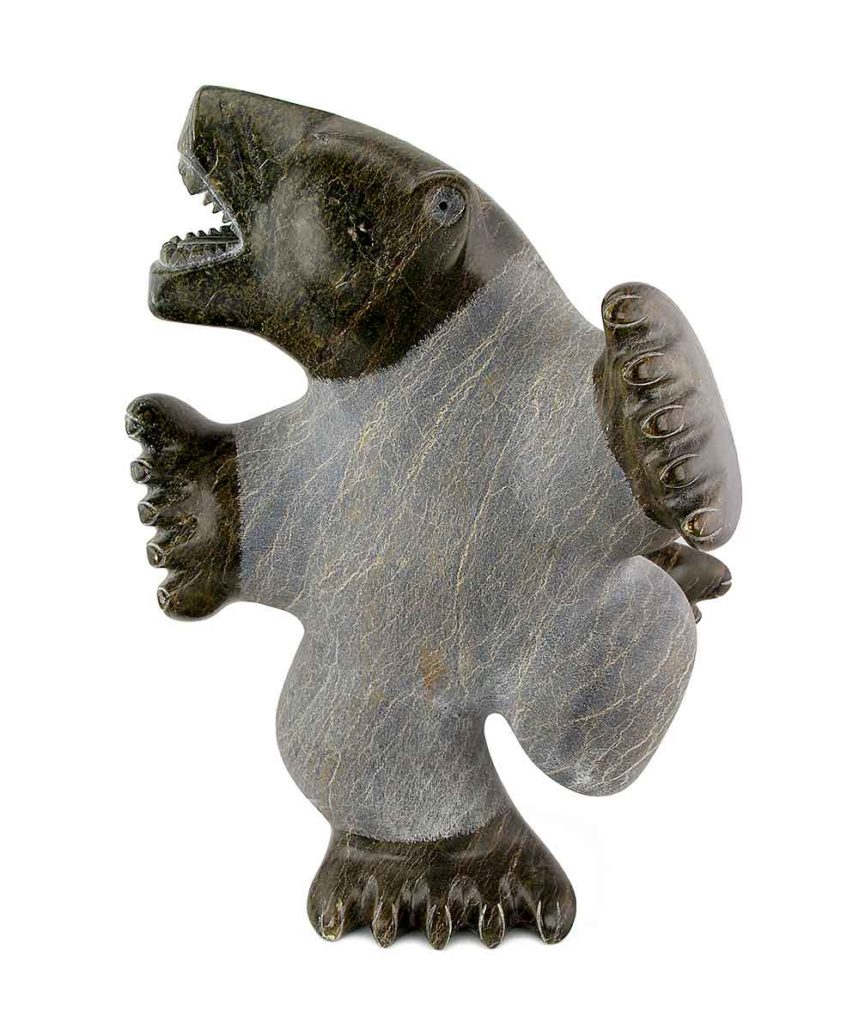 |
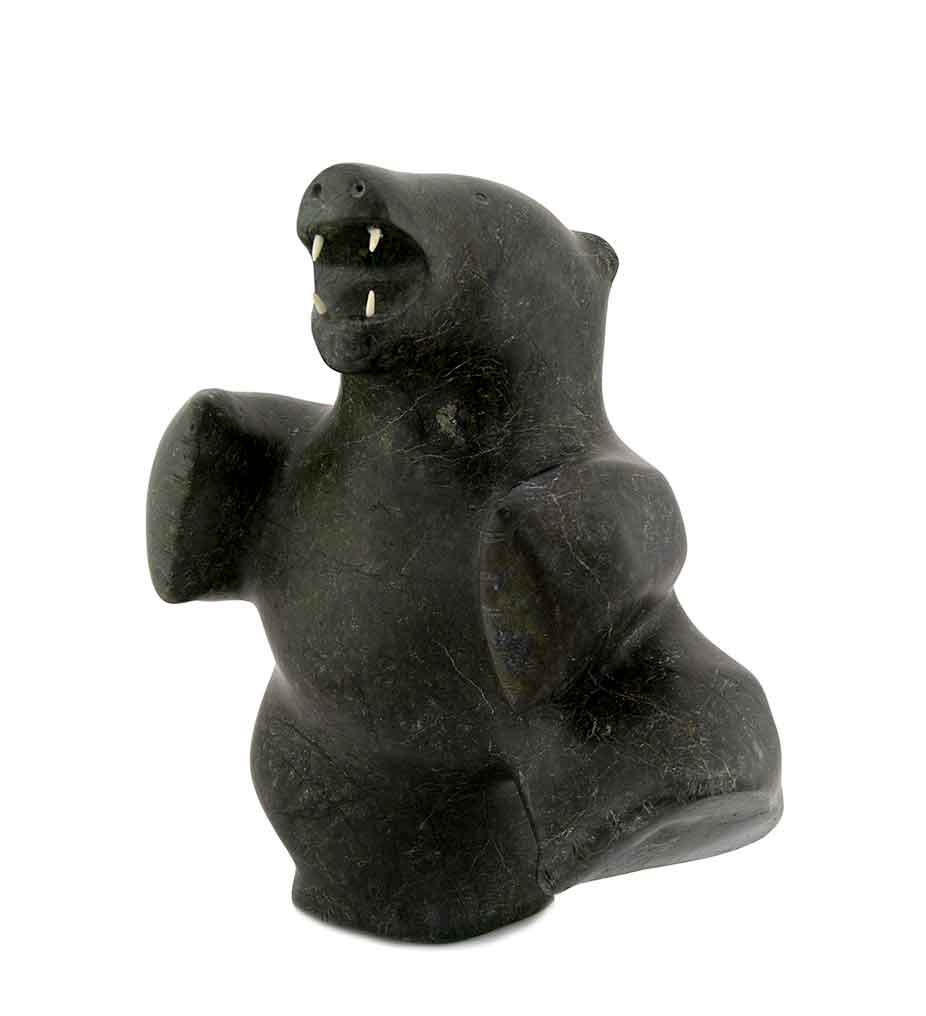 |
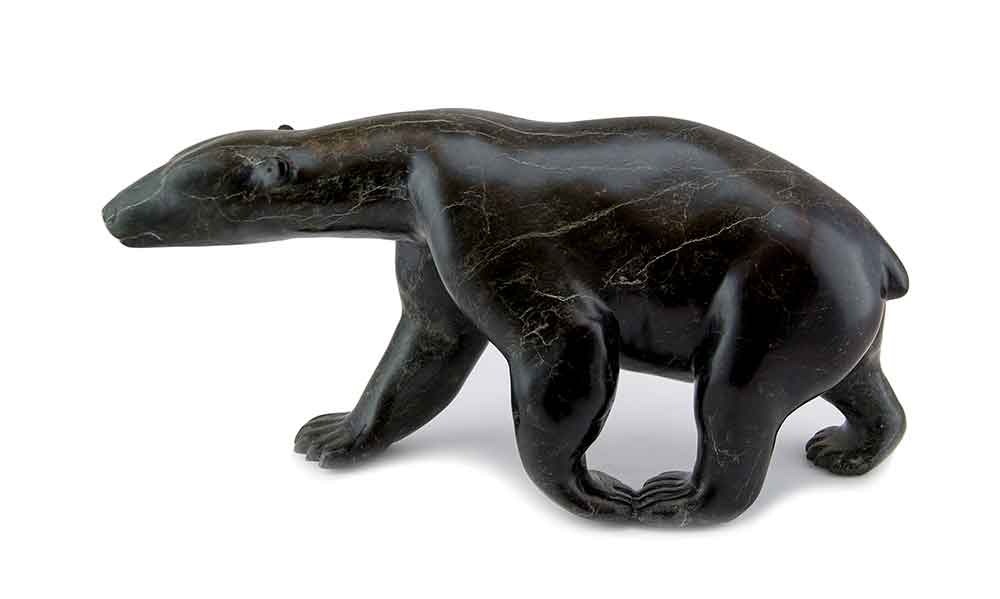 |
Caribou are a commonly sculpted animal in the Arctic, and these vary from abstract to life-like. The creature, possibly a caribou, by Andy Miki is an example of an abstract sculpture. In other sculptures, not shown here, Miki carves abstract caribou that suggest how they might look from a distance.
I acquired the beautiful caribou by Lutka Qiatsuk from Alma Houston in her gallery in Nova Scotia. One of several remarkable features of this carving is the artistic license in making such large antlers, which in my opinion adds to the striking appearance of this sculpture.
The caribou sculpture by Jacob Irkok, typical of this artist, is very different from that of Andy or Lutka, as well as being a striking and original carving. Irkok carves caribou antler rather than stone. This caribou has a flatness that is not present in the others and has a strong presence by its form and simplicity.
| Andy Miki Standing Animal |
Lutka Qiatsuk Caribou |
Jacob Irkok Caribou |
 |
 |
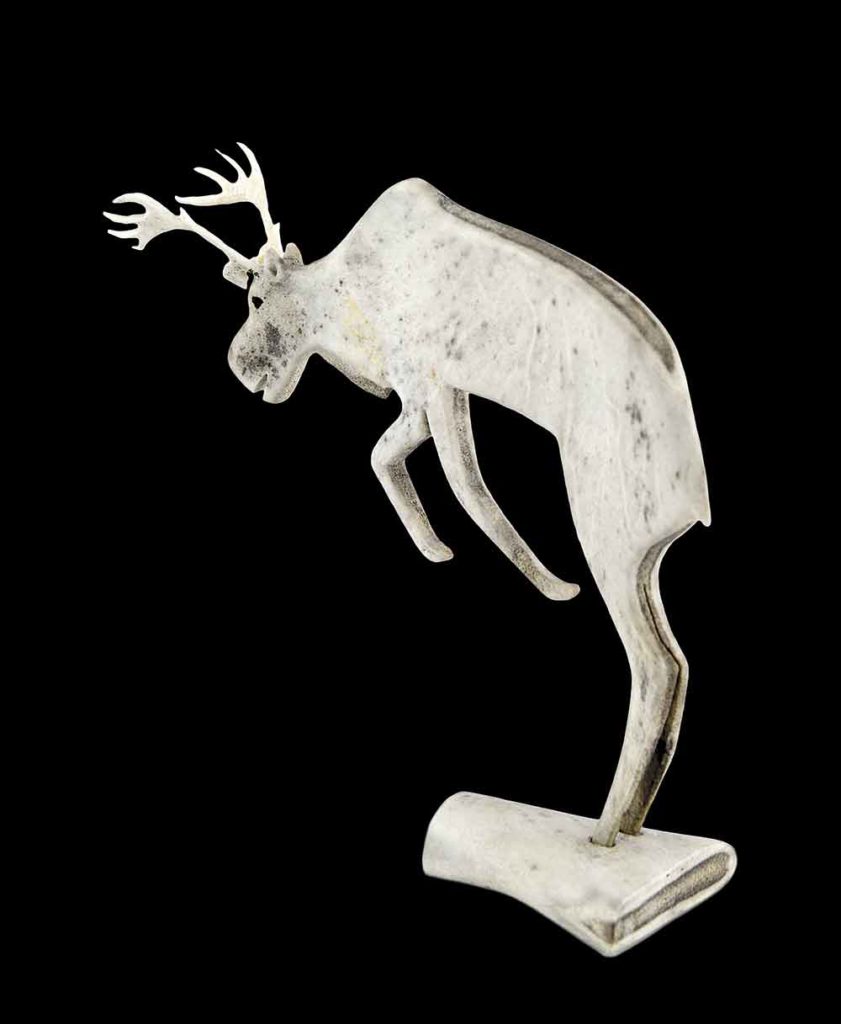 |
Birds are a typical subject for Inuit artists. An extraordinary falcon by Osuitok Ipeelie, one of the greatest Inuit artists, is lifelike, although one foot is over its heart, as a person might have listening to the national anthem
Another bird sculpture shows the unmistakable style of Abraham Etungat. The beautiful green serpentine stone and outstretched wings with distinctive markings – a proudly standing bird – is typical of Etungat. In this particular piece, a smaller, baby bird is present as well, which makes this elegant carving unique and rare.
| Osuitok Ipeelee Hawk on one leg |
Abraham Etungat Bird and Young |
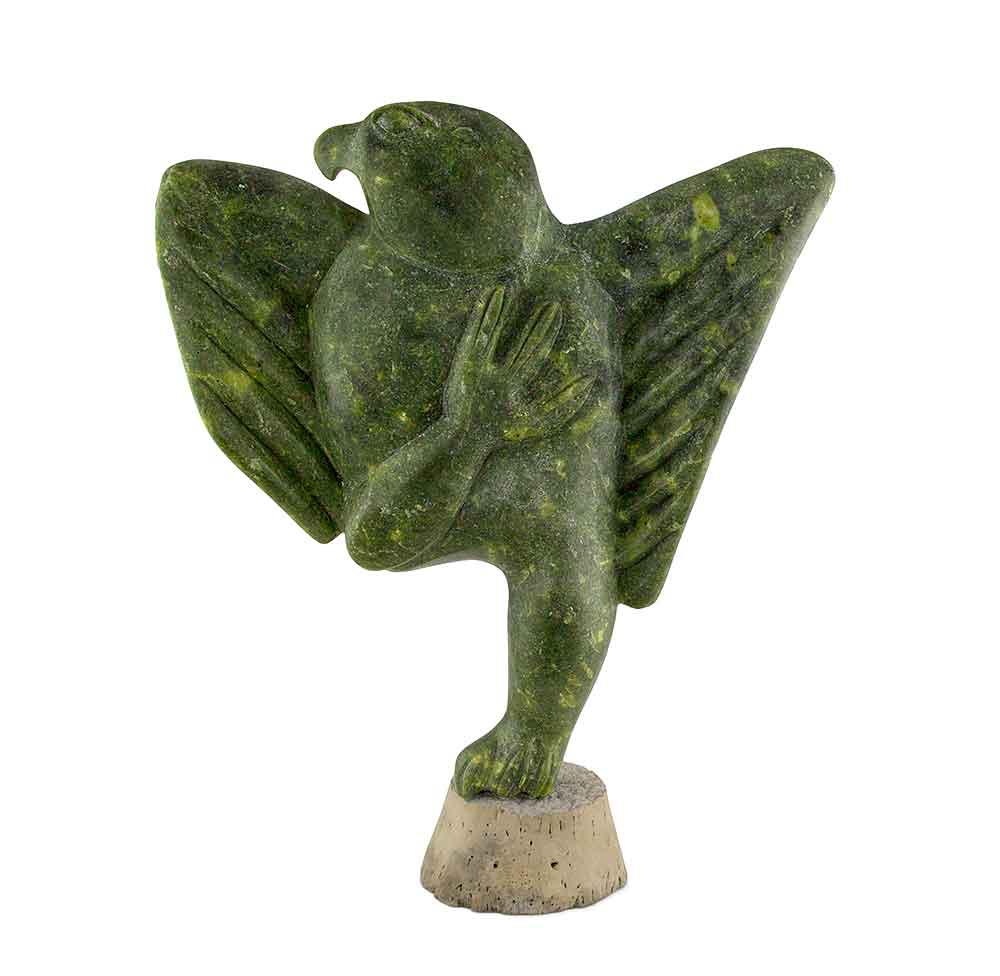 |
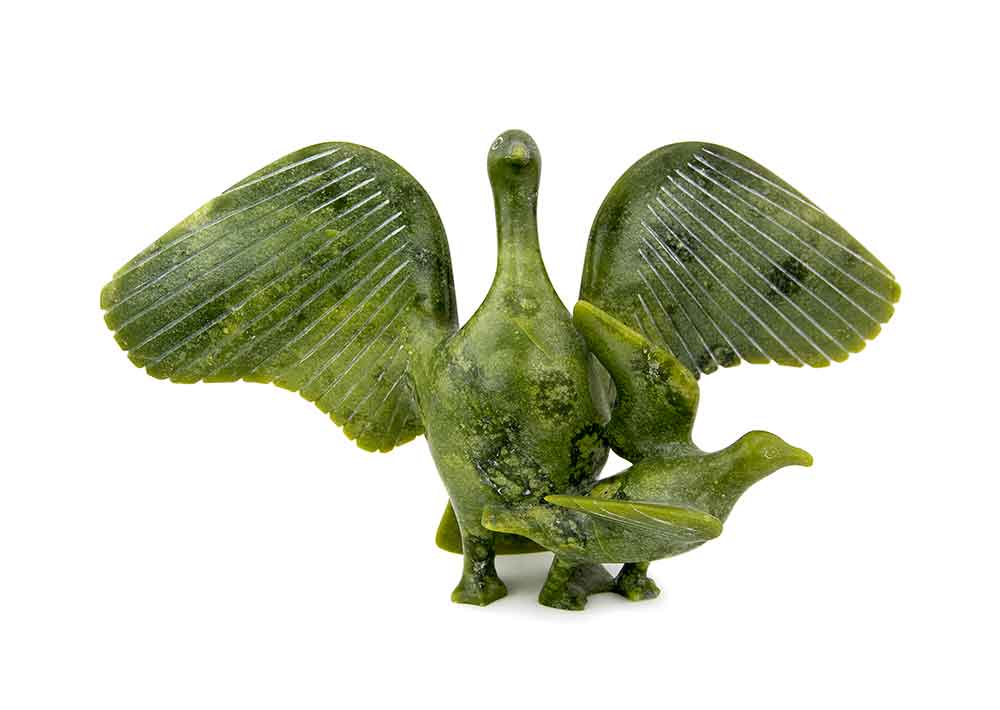 |
I purchased an owl sculpted by Tudlik Akesuk from John Houston, son of James Houston, who acquired it from his mother Alma Houston, who bought it directly from Tudlik on the beach in the Arctic! It has quite a history. Essentially all Tudlik’s sculptures are owls; this is an important example of his work.
Latcholassie Akesuk, Tudlik’s son, also carved abstract owls. The Latcholassie carving shown here is a rare Inuit sculpture in white marble, as well as being one of the greatest of all Latcholassie’s remarkable work. Unlike Tudlik’s owl, Latcholassie’s is a shaman owl with human arms and legs.
Another owl, this one by Joe Talirunuli, could not be mistaken for any other owl sculpted by a different artist. Talirunuli is famous for his owls, hunters and, especially, iconic migration sculptures – men in a sailboat migrating in search of better hunting grounds.
| Tudlik Akesuk Owl |
Latcholassie Akesuk Owl |
Joe Talirunuli Owl |
 |
 |
 |
Faces are the subject of many Inuit sculptures, and these alone could well be the topic of an entire book. Here I show a couple of extraordinary examples. The face by John Tiktak is simple and refined. Not all Tiktak faces are so elegant, which testifies to his versatility. This one is among his finest pieces. The slightly slanting mouth give the face life with an intriguing personality. Is it smiling or thinking? What’s going on in the face’s brain? I ask myself the same question when I look at the Mona Lisa.
John Kavik, a contemporary of Tiktak, is another Inuit artist with a strong, characteristic, original voice. His work is often gruff, as if shouting to be heard from his innermost soul. Kavik’s face shows a more tormented nature. Yet the difference between the Tiktak and Kavik faces is relatively small: they are approximately the same size and made from similar stone. The difference is all art: one is an Tiktak face, the other a Kavik face. One would not mistake one for the other. These Inuit sculptors are artists of the highest caliber.
Another sculpture by Kavik that shows a human face snuggled against a bear demonstrates the rough, unique style of this artist. It’s possible that this carving is a transformation piece of a shaman moving from a human to a bear-like state, but that’s just a guess.
| John Tiktak Head |
John Kavik Woman with Braids |
John Kavik Man & Bear |
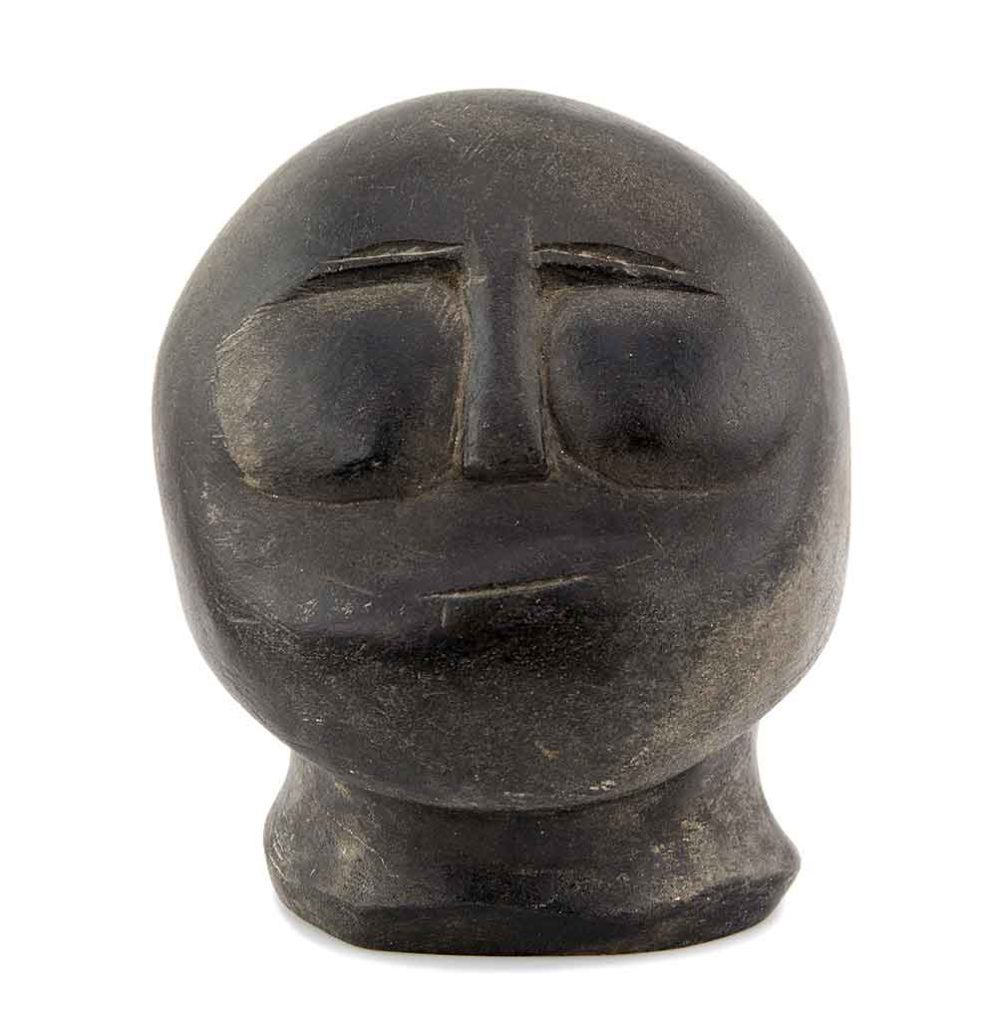 |
 |
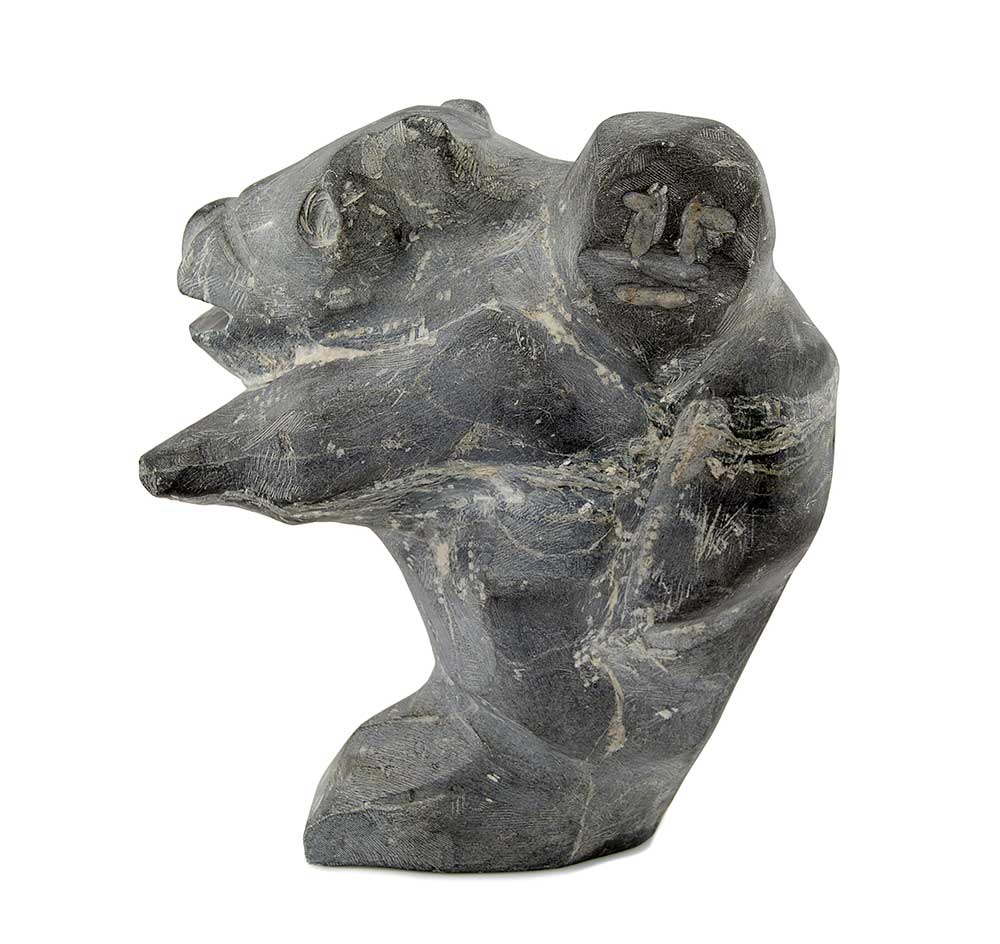 |
A number of Inuit sculptures express inner feeling. John Tiktak shows a man with a backache. Could there be any other interpretation of this unhappy fellow suffering in pain?
Or look at these two individuals expressing grim determination, yet differently. The first is by Barnabus Arnasungaaq, a major Inuit sculptor. This Inuk is going to get where he’s going, period. Nothing will stop him!
Matthew Aqigaaq’s sculpture of a determined Inuk, on the other hand, is very different from the one by Barnabas, perhaps not quite so headstrong, but not to be denied either.
| John Tiktak Man With Back Ache |
Barnabus Arnasungaaq Man |
Matthew Aqigaaq Woman |
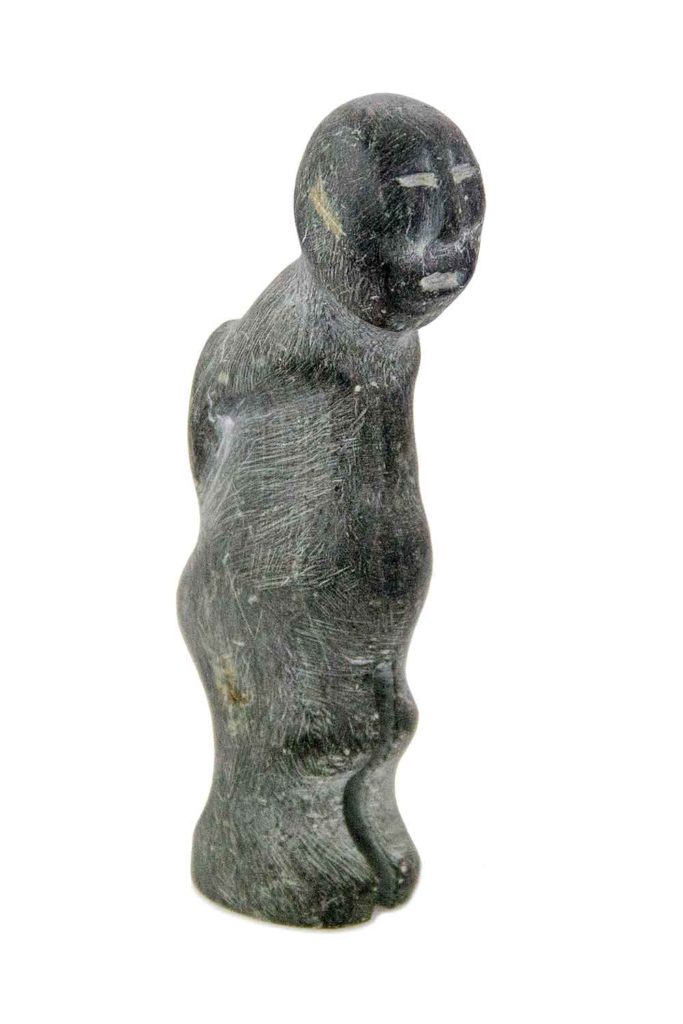 |
 |
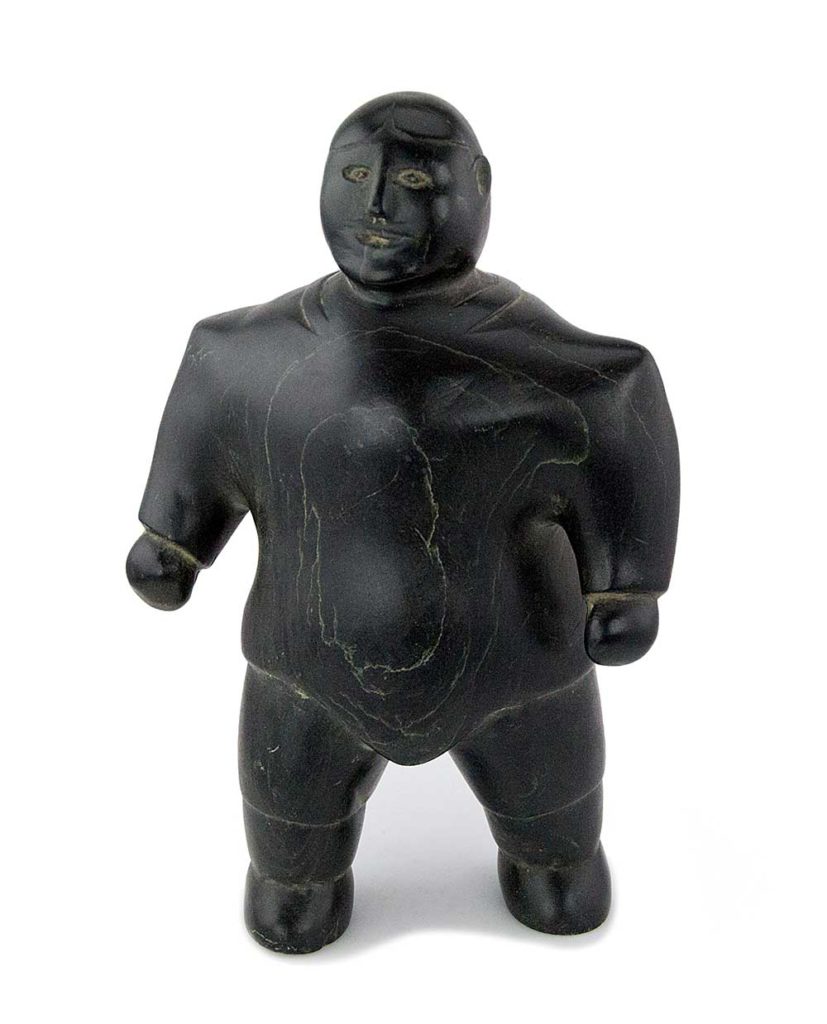 |
Diversity almost defines Inuit art. Compare the following two shamans, one in whalebone, the other in stone. The whalebone shaman is by the incomparable Karoo Ashevak, the founder of abstract Inuit art; the stone shaman is by Judas Ullulaq, an innovator of humor and almost Picasso-like traits in his work.
| Karoo Shaman |
Judas Ullulaq Shaman |
 |
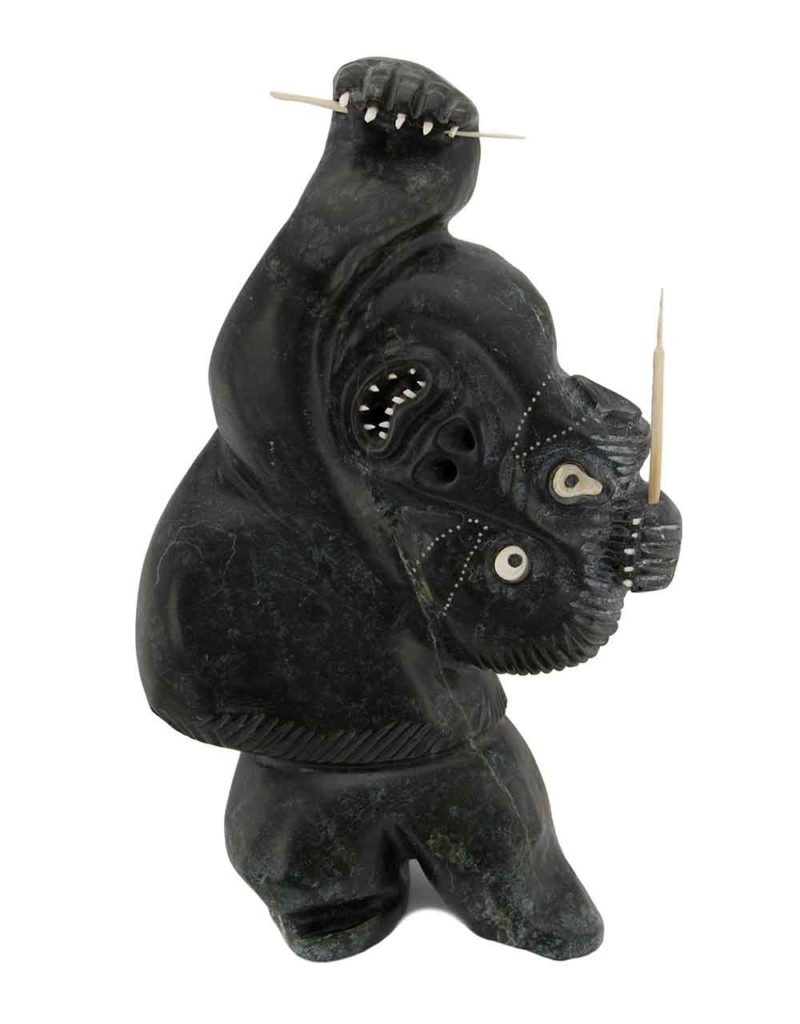 |
It seems fitting to end this slide show with extremes in abstract and surrealistic sculptures, pieces that no tourist would ever link with souvenirs! The first is by John Pangnark, a pioneer in Inuit abstractions. He carved stone forms of individual Inuks almost exclusively, with the exception of an occasional piece in caribou antler. A Pangnark face comprises a few scratches and is usually very faint, yet it is unmistakable. The bodies are sculptural with mere suggestions of various parts. Here we see a man with outstretched arms.
In contrast, viewers of Eli Sallualu's fiercely imaginative surrealistic sculpture will need to define it for themselves!
| John Pangnark Man With Outstretched Arms |
Eli Salluala Spirit |
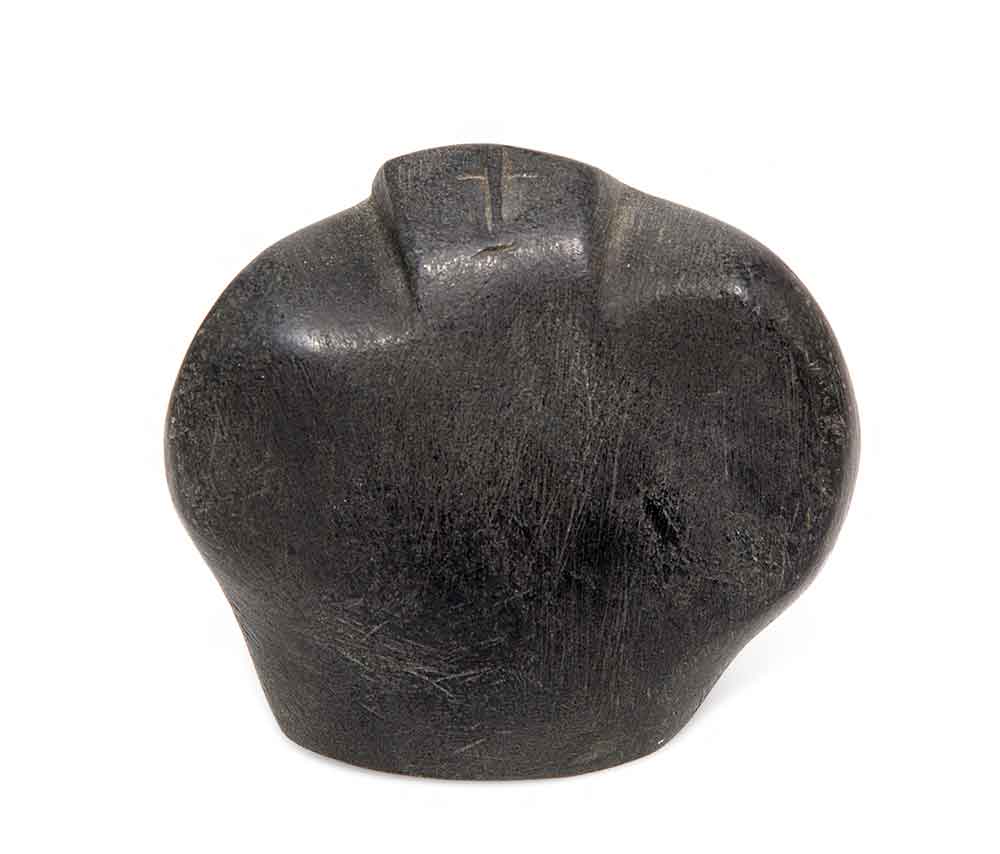 |
 |



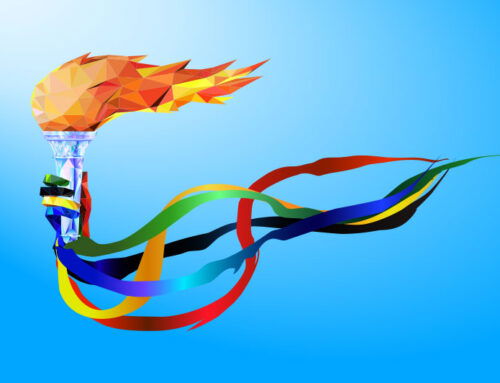
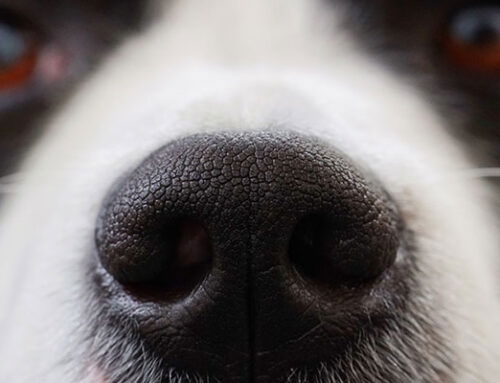

Leave A Comment